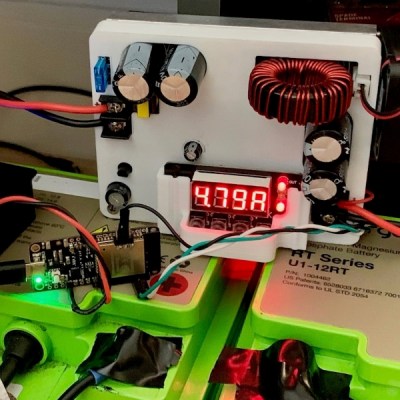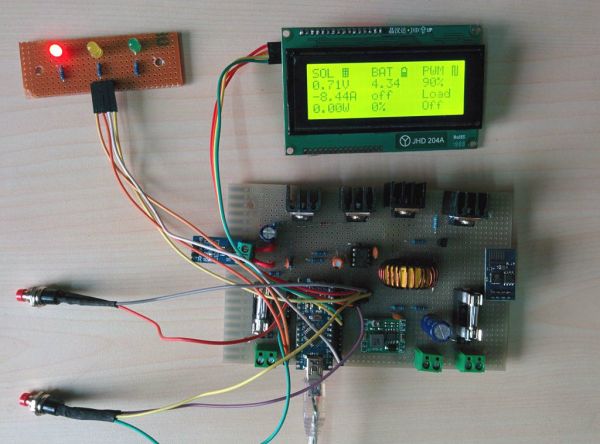Solar power projects have become, in general, a matter of selecting components like panels and batteries, hooking them together with industry-standard connectors, and sitting back to watch the free electricity flow. As such, solar projects have become a bit boring, so it’s not often we see one that attracts our attention the way this dirt-cheap open-source solar project does.
 The backstory on [Tim O’Brien]’s DIY off-grid PV system starts with his desire to charge his eWheel, which amounts to a battery-powered standing unicycle. They look like a fun option for getting around an urban environment if you have the requisite degree of coordination, which we clearly lack. But charging something like that or an eBike is a great use case for solar, especially since [Tim] happened upon a 450W PV panel on the cheap. Sadly, the panel was a commercial unit, and compatible off-the-shelf MPPT, or maximum power-point tracking, controllers are expensive.
The backstory on [Tim O’Brien]’s DIY off-grid PV system starts with his desire to charge his eWheel, which amounts to a battery-powered standing unicycle. They look like a fun option for getting around an urban environment if you have the requisite degree of coordination, which we clearly lack. But charging something like that or an eBike is a great use case for solar, especially since [Tim] happened upon a 450W PV panel on the cheap. Sadly, the panel was a commercial unit, and compatible off-the-shelf MPPT, or maximum power-point tracking, controllers are expensive.
His solution was to build his own controller using a cheap DC-DC converter that just so happens to have serial remote control. An ESP32 monitors the panel voltage and controls the buck converter to run whatever he wants. When he’s not charging his eWheel, the system runs his laptop and router. As a bonus, the ESP32 talks to IoT services like Adafruit.io and Thingspeak, allowing him to track MPPT data without shipping it off to parts unknown.
While we appreciate a DIY MPPT controller and like [Tim]’s build, we feel like the documentation needs a bit of fleshing out. With solar installations, the devil is in the details, and not addressing seemingly mundane issues like cable routing and connector installation can lead to disaster.











